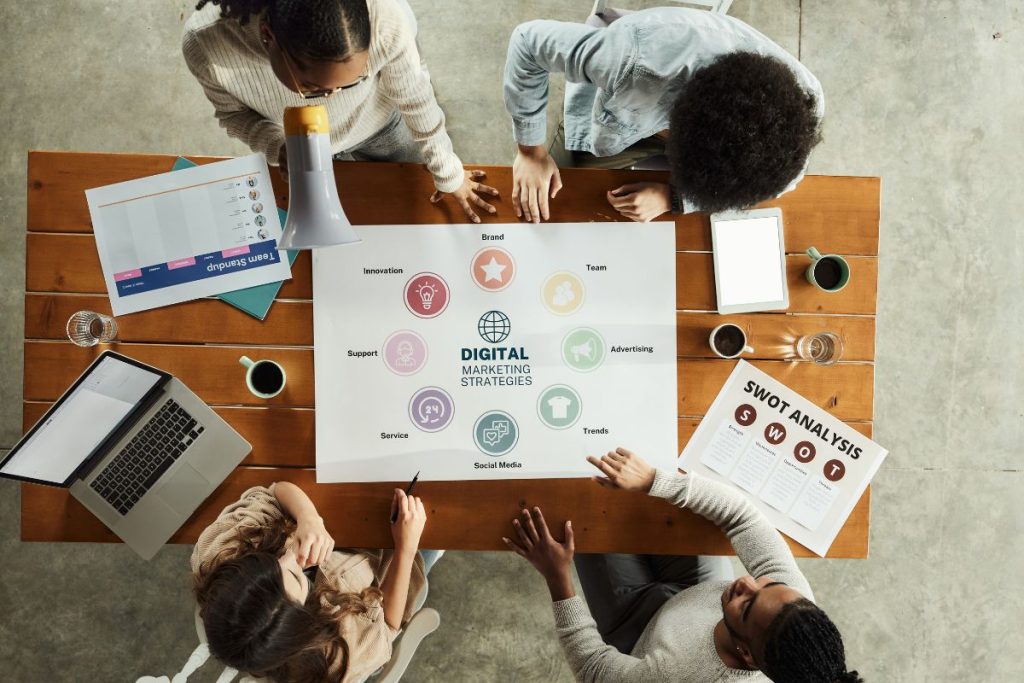Marketing is constantly facing various changes, and these changes are happening at a rapid pace.
Consequently, what worked just a few years ago is no longer relevant and doesn’t produce the desired results today. Technology, social media, and people’s habits dictate new rules.
To stay ahead of the competition, companies are actively seeking partners and solutions that will help them stand out.
One such reliable player is the international agency Netpeak.us, which has been working with clients worldwide for many years.
Its work is aimed at helping businesses grow and feel confident in the online space. If you’re wondering how to build a truly effective marketing strategy in 2025, you’ve come to the right place.
Expectations of the Modern Audience: What’s Important?
People have become more demanding of brands. They expect not only a high-quality product, but also honesty, speed, and openness. If a company speaks to customers hastily, it will quickly be forgotten.

People want to see emotion, care, and attention. They want to feel unique and treated as individuals; they lure people in with clichés. This suggests that the strategy should be built not only around the product but also around its values.
Think about how your brand is perceived. Listen to feedback, study comments, and conduct surveys to gather valuable insights. When audiences feel they are being spoken to as a human being, they respond with trust.
This principle has always been relevant, but in 2025, it has become mandatory. Today, strategy is built on a personalized approach.
Another important point is transparency. In the digital age, it is impossible to hide information. People quickly verify facts, read reviews, and draw conclusions.
If a company promises more than it delivers, it will be revealed. Therefore, honesty in communication has become a key tool for building trust.
Analytics as a Critical Decision Tool
Without data, any strategy becomes a game of guesswork. You can’t accurately assess how practical your approach is or how your advertising campaigns are impacting people. Therefore, you can’t understand whether adjustments are needed, and if so, in what areas.
Fortunately, analytics tools are becoming increasingly accessible. You can monitor what’s working and what’s not, literally in real time. This means that instead of wasting budget, you can quickly redirect resources to where they’re delivering results.
Identifying problems early on means spending less. Furthermore, you can react more quickly, making adjustments more effective and yielding results more quickly.
It’s essential not only to collect data, but also can draw meaningful conclusions. For example, if you see that one channel is generating five times more leads than another, why continue investing in an ineffective channel? Data helps you build a strategy based on facts, not guesswork.
Today, analytics isn’t just about numbers. It’s also a way to understand customer behavior. You can determine their search methods, how much time they spend reading posts, and at what point they abandon their purchase. This allows you to understand why customers are leaving and what you can do to prevent it.
Best Practices for Marketing in 2025
An integrated approach helps achieve good results. Even if you use practical tools, if you fail to integrate them properly into a stable system, the results will be suboptimal, if not nonexistent.
The fact is that a successful strategy is built from many components that must work together. No single tool will deliver results alone. Only a combination of different methods provides real power. To build such a connection, you can use the following key practices:
- data-driven personalization;
- active use of short videos;
- focus on honest content;
- quick response to trends;
- developing your own communities;
- intelligent use of AI tools;
- integration of offline and online experiences.
Each point deserves separate attention. Personalization enables a brand to communicate with its customers in their own language, fostering a more meaningful connection.
Short videos capture attention in the first seconds and increase engagement. Honest content builds trust and helps you stand out from the competition.
By quickly responding to trends, you have every chance of being in the spotlight. Building your own communities allows you to create a loyal customer base. And, of course, don’t forget about AI tools. They simplify your work and open up new horizons.
By combining all these approaches into a single system, you’ll create a flexible and resilient strategy that can adapt to market changes while maintaining effectiveness.

Test, Learn, and Optimize
Testing shouldn’t be considered a luxury. Today, it’s a necessity. Small experiments yield big answers and help find working solutions. The key is to move step by step, not expect perfect results the first time.
The faster the “test-analyze-optimize” cycle goes, the higher the return on your marketing — a few key steps will help you achieve this:
- Run A/B tests for headlines and landing pages.
- Try different CTAs and creatives.
- Launch minimal hypotheses quickly.
- Analyze data and document findings.
- Share results within the team.
- Track not only clicks, but also LTV.
A poor test can be misleading. Therefore, ensure that your experiments are of high quality, that the sample sizes are sufficient, and that the metrics are clear.
Tests make it clear which ideas deserve more fuel — and which ones you should let go. Over time, you will amass a collection of effective solutions and reliable methods.
This way, you can increase the predictability of your marketing. You can also reduce the risk of costly mistakes.
The Human Factor and Its Role
Technology is paramount today. However, people will always be more important. No matter how advanced artificial intelligence becomes, it cannot replace human warmth and creativity. The foundation of any business is its team, clients, and partners.
Strive to communicate with people simply, avoiding pretentiousness and unnecessary words. Demonstrate that there are real people behind your brand.
Customers need to know they are heard and valued. Brands that treat their customers with respect turn them into allies.
Marketing in 2025 is built on the premise that those who build relationships, not just sell, win. Strong connections are what keep customers loyal, even when competitors offer lower prices. Long-term loyalty is best achieved through a human approach.
Conclusion
In 2025, marketing isn’t just a collection of buzzwords and tools, but a strategic approach that drives results. It’s a living process that relies on people, values, and continuous development.
A strategy must be clear, flexible, and honest. It must integrate analytics, technology, and a human-centered approach.
If you want your brand to not only exist, but also stand out and grow, start developing your strategy today.
The experienced specialists at the international agency Netpeak will assist you with this important task. They have extensive experience.

